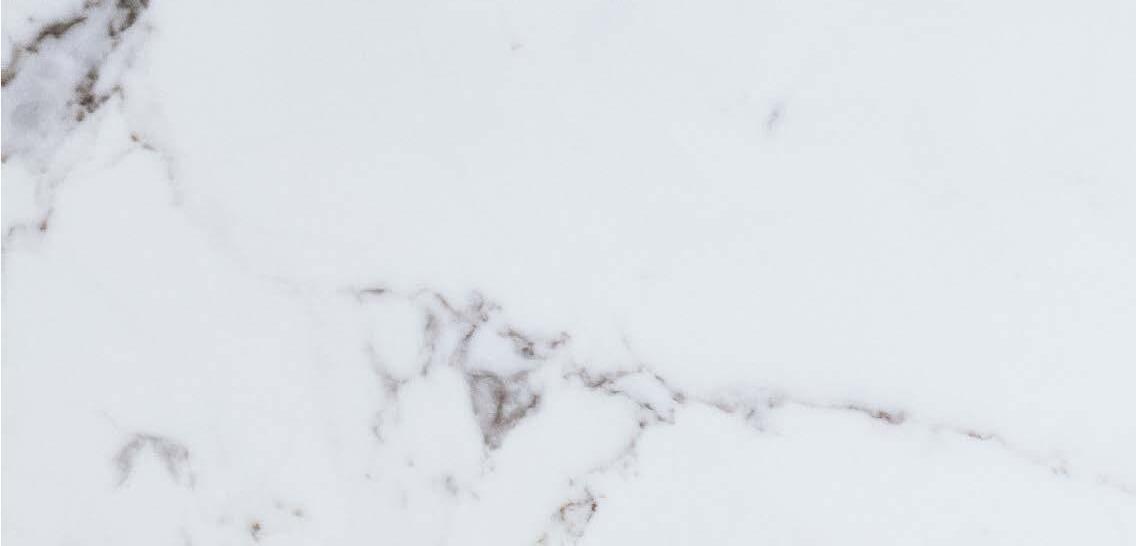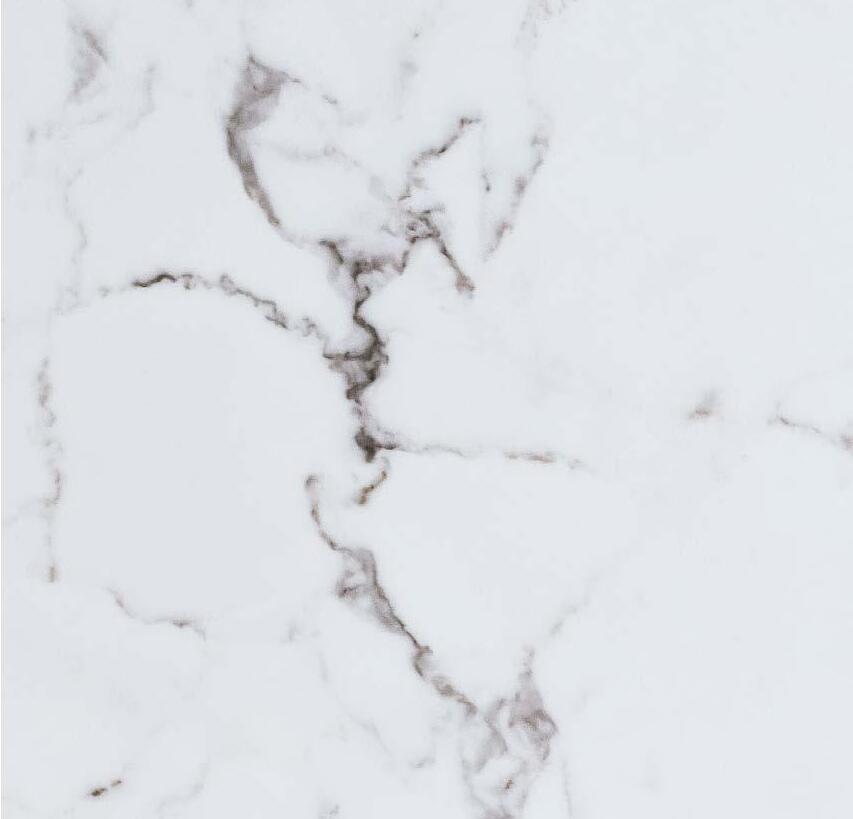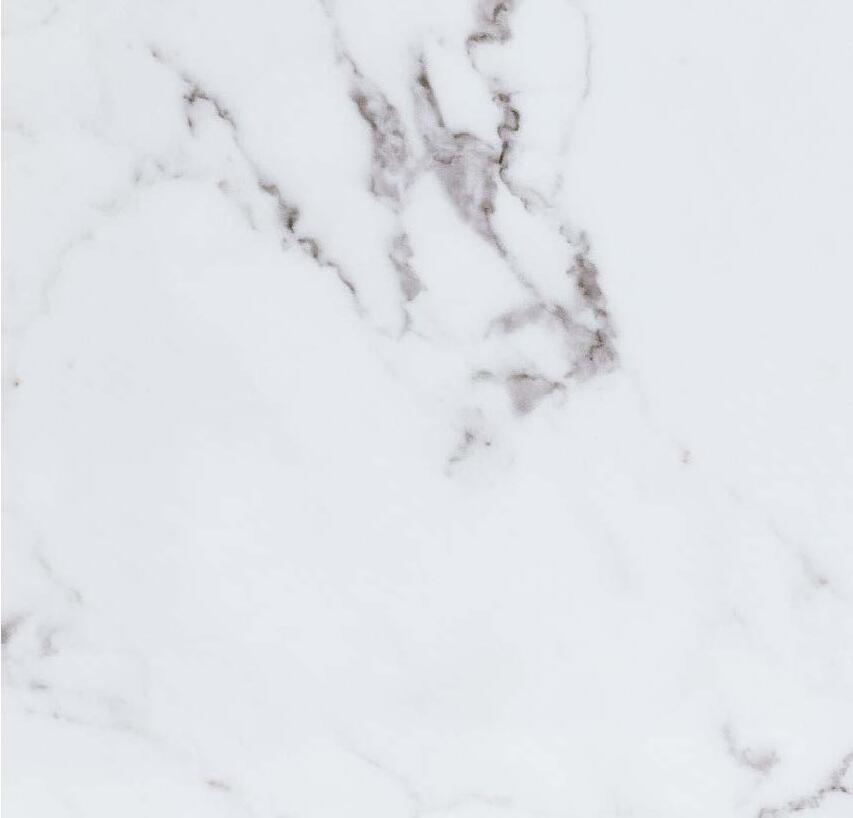


























As the weather continues to cool, now is the time to ready your shed for fall’s and winter’s demands. From enhancing its storage to protecting it from the elements, here are three pro tips to help you prepare for the seasons ahead.
Shelves or adjustable wall panels can boost your shed’s storage capacity, giving you extra room to store bulkier items like your patio furniture. In addition, installing hooks or even bike racks is a practical and simple way to hang items that would otherwise take up floor space. Before acquiring your supplies, though, be sure to measure the interior to ensure that everything will fit properly.
Your lawn mower, hose, and other tools can leave liquids and debris behind that can rot a shed’s wood flooring. Consider
written by: LAUREN KIM
painting it with epoxy paint or a waterproofing wood sealer or covering it with interlocking garage-floor tiles to protect it from moisture.
Take the time to organize your space before winter arrives, such as by discarding or donating anything you no longer need. Consider moving your summer gear to the back and your fall and winter supplies to the front. You may also want to put your spring supplies to one side to make them easily accessible when winter makes its exit.
Once your shed is updated, you can tackle your outdoor tasks with greater confidence and ease, ensuring that your yard can get the care it needs as the seasons change.
PUBLISHER
Chief Executive Officer Steven Acree publisher@remindermedia.com
EXECUTIVE
President Luke Acree
Chief Marketing Officer Joshua Stike
Chief Operating Officer Michael Graziola
MARKETING
Director of Marketing Dan Acree
Director of Creative Services Kristin Sweeney
Director of Content Jessica Fitzpatrick marketing@remindermedia.com
EDITORIAL
Editorial Manager Alexa Bricker
Senior Layout Designer Jordan Hunsberger
Senior Writer and Editor Matthew Brady
Editor Dakota Damschroder
Content Writers Allison Gomes, Bonnie Joffe, Lauren Kim, Andre Rios editorial@remindermedia.com
SALES AND CLIENT SUCCESS
Vice President of Client Success Ethan Acree
Vice President of Operations Nicholas Bianco
Vice President of Sales Michael Campanile hello@remindermedia.com
OPERATIONS
Vice President of IT Thomas Setliff
Director of Projects Kelsie Schmall
Director of Business Intelligence Daniel Gallaway
Director of Manufacturing Shannon Mosser
Vice President of Finance Shana Lebofsky
Director of HR John Keogh hr@remindermedia.com


visit
at www.remindermedia.com, email us at info@remindermedia.com, or call us at 866-458-4226. All rights reserved.




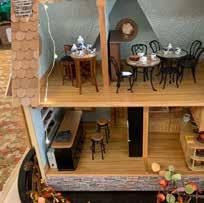

Jared Waters, owner of Mini Materials, shares how his building-supply company kindles the imaginations of builders of all ages and fosters the joy of home design.
What is Mini Materials? We’re the coolest little company! Think of Mini Materials a bit like a buildingsupply store for people working in miniature. We have small cinder blocks, bricks, lumber, and nearly everything else you’d need to craft unique creations. Dollhouse curators, diorama builders, and so many other enthusiasts assemble miniature worlds and look to us for help creating them. We also have kits and accessories to bring your designs to life, and we can even print on most of our products for businesses looking to have standout promotional items.
Who founded this company, and what was their inspiration? A gentleman in Florida founded it. He wanted to buy a mini cinder block but couldn’t find any suppliers, so he made one himself and posted it to Reddit— it went viral there, hitting the front page twice. He then started making more of them in his garage and eventually partnered up with a college friend to build the company.
interview with: JARED WATERS
written by: ANDRE RIOS
photography
by:
MINI MATERIALS

When I stumbled across one of their Reddit posts, I discovered they were looking to sell the business. So I messaged them and, a few months later, became the owner of Mini Materials.
Who can enjoy your products? Anyone twelve years old and up can have fun building with us. Most people modeling at this level are adults, but it is also a great family activity. We even have educators using our products in the classroom to teach applied building skills.

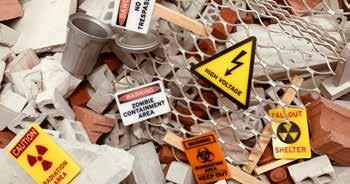
Mini Materials is also one of the few miniature companies with a near equal male-to-female demographic split. So if you enjoy puzzles, crafting, and models—or did as a kid—I’d recommend giving miniature building a try. I find it therapeutic and meditative, and I love having something tangible in my hands after a project is done.

What are some of the most creative “builds” you’ve seen? We showcase builds every month in our newsletter. Some of my favorites are big builds: projects that are small in scale but large in scope. We once sponsored a project where the artist made multistory condos for birds. It was a huge endeavor, and they even created a stop-motion film of it coming together. It’s top-notch!
Another type I love is extra-small builds. Most people build in the 1:12 scale (where one foot equals one inch), but some squeeze entire buildings inside little walnut shells. Other creative builds are those with action figures or toys. There is even an entire subculture where people are blending miniature
buildings, paint, videography, and special effects like smoke and explosions to create incredible art pieces with our products.
But some of my favorite builds are the personal ones. For example, one person recreated their grandparents’ hardware store from the turn of the century. Working with authentic base materials gives your imagination maximum room to run!
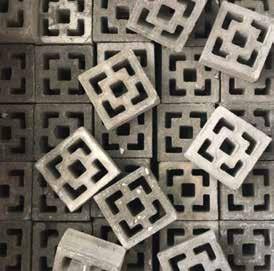
What makes Mini Materials a great alternative to other miniature building supplies? I’m happy to see people build in any medium rather than be on screens, so I think any building toys are a great gateway to creating things. It’s been my experience that a lot of people graduate from simple kits and just don’t know what to build next. Mini Materials allows them to create anything. Beyond building supplies, we have to-scale signs and die-cast vehicles too.
How do you personally play with these products?
I’m building and testing new designs all the time! Our company gets some really fun requests for custom items, so I get to spend a lot of time shrinking down all sorts of things. I’m often asked to create tiny versions of industrial equipment for companies’ sales teams, and I just recently made the flooring from a movie for an artist’s miniature recreation. On a more personal level, I also build with my family—we recently made a large toy arena for my son’s birthday that was a big hit!
Why is it important to Mini Materials that these products are made in America?

Miniatures are little time capsules that freeze a place, a scene, or a moment. Authenticity is a big part of capturing that magic, and so many items made overseas are not true to the look and feel of the items we interact with every day in America.
It’s common for several generations to play with a dollhouse that has countless repairs throughout its life. When you are making something that might become a family heirloom, you want to make sure you can control the quality. For us, that means making most of our items by hand right here in Portland, Oregon.
For more info, visit minimaterials.com
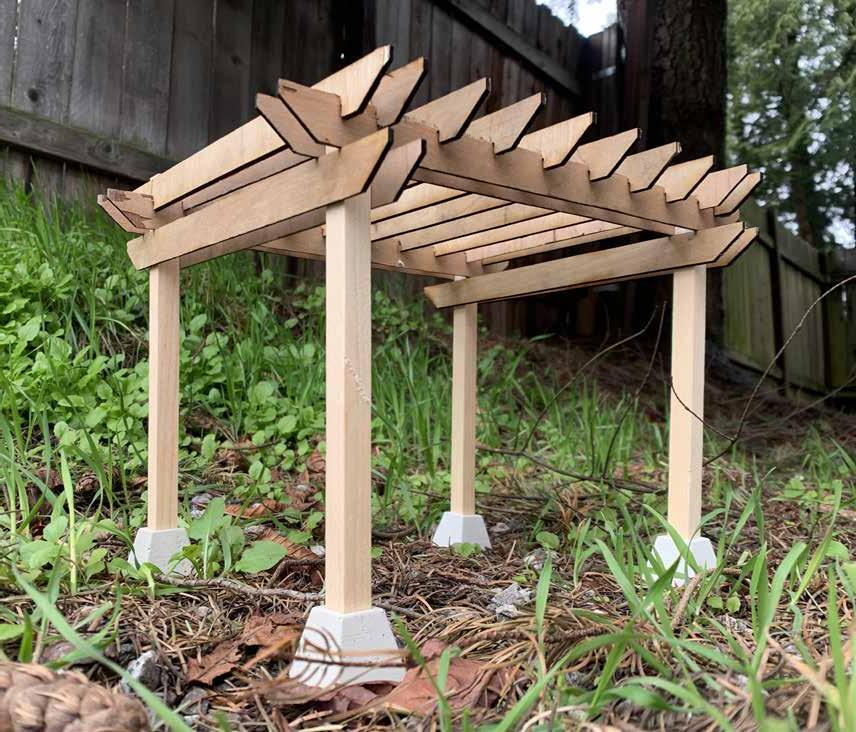
Heroic Gardens founder Collie Turner and veteran volunteers discuss the impact of her nonprofit, which improves veterans’ yards and lives through horticulture.
Collie Turner, founder
I was raised in service—my grandfather, a World War II army medic, inspired Heroic Gardens. But I chose a different career path, which left me dissatisfied. So I started this nonprofit as a way to remember the importance of service and acting with an open heart.
A year into it, I went to school to study horticultural therapy. It’s scientifically proven that you are more relaxed and less depressed and anxious when you’re working with plants, which is why our mission is to connect veterans and their families with the healing power of nature. We transform their properties by building gardens, offer online nature-based classes, and host forest bathing meditation for communities. At the end of the day, this is horticultural therapy for both the recipient and the giver (military veteran or not). The sky’s the limit for who and how we can help.
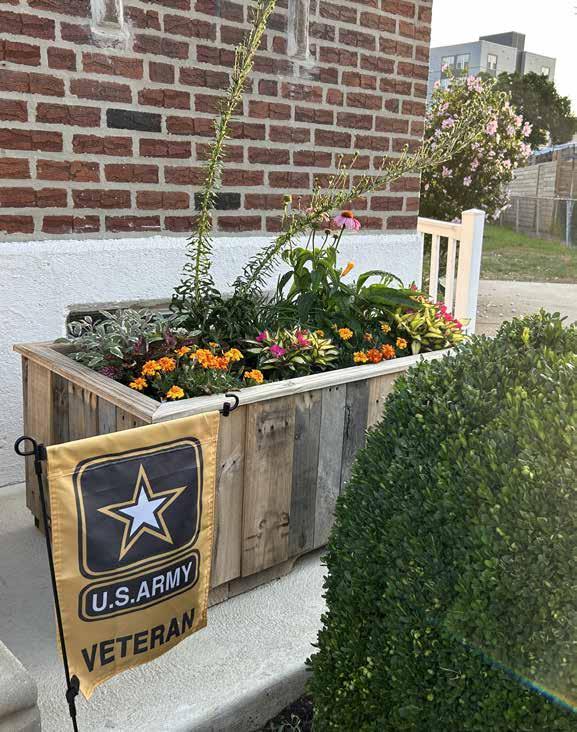
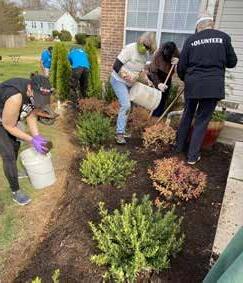

After returning from Afghanistan, I stopped doing everything—talking to anybody, going to therapy—for almost nine months. When I found Heroic Gardens years later, my life was still rotten; I didn’t care about anything and was beating myself up over my military service.
Volunteering with Heroic Gardens brought me out of my shell and proved I wasn’t broken. Mentally, it has really helped with my PTSD, calming me down and making me believe in myself again. It feels great to go out there, contribute to other people’s lives, and make their spaces beautiful; I call it “bringing order to chaos.” I also discovered that I have a green thumb! Gardening has become an everyday passion, and I’ve learned so many new skills through the program. When you walk past a garden you created, knowing the difference it’s making to the veteran and their community, you feel such a sense of accomplishment.

In the military, you work as a team but are detached in your role, so you get comfortable with isolating yourself from nature, other individuals, and society in general. That isn’t healthy. I tried various veteran-support activities over the years, but they didn’t improve my well-being. Heroic Gardens, on the other hand, did because it’s all about camaraderie: there’s always a sense of pride when you work with others to give back to the veteran community.
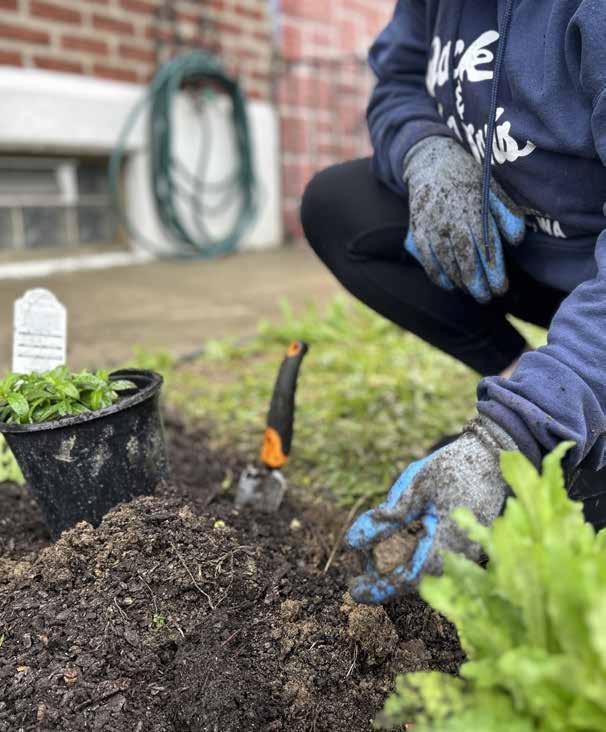
The program has renewed the direction in my life— I had always felt most alive outdoors, but for a while after my military service, I just stayed in. Now I spend all my free time outside again, and inside my home my plants provide clean air and a soothing aroma. This organization is certainly unique in its approach: connecting the healing power of nature with both veterans and volunteers. It’s easy to give somebody a pill for their issues, but digging in soil and breathing in fresh air is extremely and naturally therapeutic.
Being from Brooklyn, I didn’t grow up around nature; I didn’t even know I had tree and grass allergies until boot camp. I always said that I had a black thumb because I was killing plants at an alarming rate. [Laughs]
I also experience chronic pain, guilt, and PTSD, so it’s difficult for me to move and be around others. For a long time, I was used to having a very insulated life. Thanks to working with Heroic Gardens, though, I now want to test my limits. I’m proud to say that I’ve made it to my crafting class every week, and my neighbors and I were inspired to start a community garden. A proverb I try to live by is “Society grows great when old men plant trees whose shade they know they’ll never sit in.” That’s exactly what this program does: leaves a legacy on this planet that will outlive all of us.
I had a rough time in the military. I was assaulted on my second day in the service, and I’ve carried that and other

issues with me even after retiring. As a result, I’m now a mental health advocate. Like some of the others, I didn’t have a green thumb, so at my first event I just dug a hole for a tree. I fell in love with the work the minute my hands hit that nurturing soil.
When you volunteer with Heroic Gardens, it makes a real difference to both you and the recipients, and anybody, regardless of their ability or disability, can help. For example, being indoors often makes us veterans think about the things we’ve done wrong, but being out in nature allows us to let them go. And here’s an example that speaks volumes about the impact a garden makes. One day, we prepared raised beds for a World War II veteran, who watched from his door as we worked, smiling widely and giving everybody a thumbs up. That’s why I’m a part of this amazing project. The lifechanging opportunities are endless for everyone involved.
For more info, visit heroicgardens.org

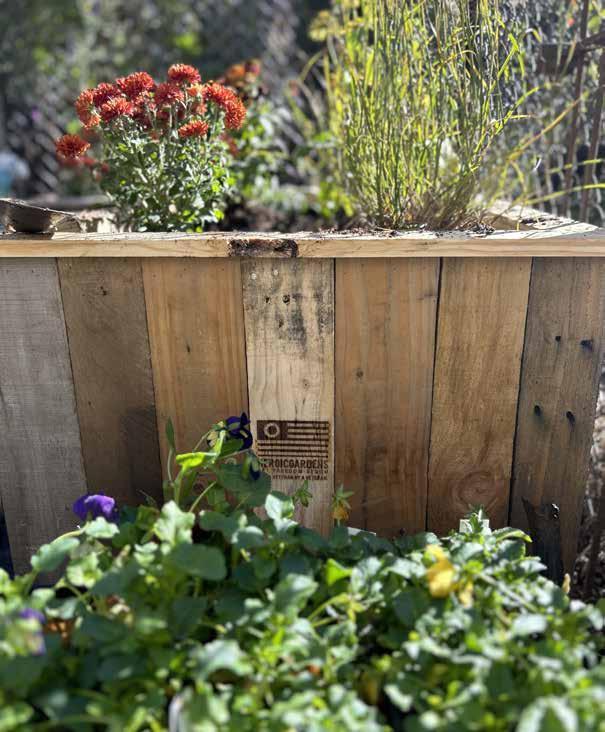
written by: ANDRE RIOS
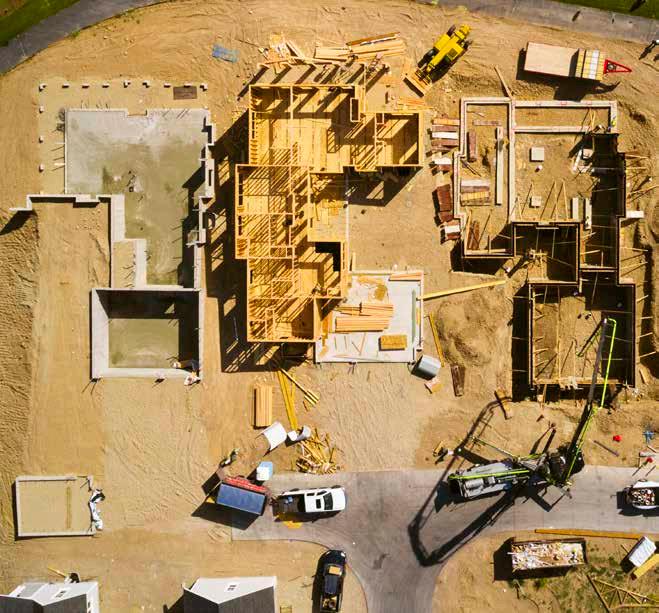

It’s been said that trust is the foundation of a solid relationship, but how much do you trust your home’s foundation? This engineering essential is surprisingly prone to a host of issues, which can impact both your home’s integrity and its resale value. However, if you make it a top priority to maintain the bottom level of your home, you can help safeguard the entire structure for years to come.
Take a careful look at both the exterior and interior of your home. Should you notice any of the following signs, your foundation may need repairs.
Hairline cracks can form on any foundation as it settles, especially with concrete-based surfaces, but ones that are very long, horizontal, or over ⅛ of an inch wide may indicate a serious issue.
If you spot any of these, call a local foundation expert immediately; the visible damage may have extended into the interior of the material, and the surface may even be bowing.
Smooth, level floors require a pristine surface underneath them, so if your foundation becomes problematic, you may encounter awkward dips or gaps or dislodged materials such as hardwood planks. In advanced stages of foundation decline, porches and decks can also start to sag or appear to separate from a home’s main structure.
Because the frame of your home sits on its foundation, some odd things can start happening as the lower surface shifts unevenly. For example, long, vertical fractures may appear in your siding or interior walls, while your doors or windows may begin jamming consistently or even cracking. Should you fail to address these issues, more severe ones can develop, including gaps between your floors and walls, ceiling cracks, and drooping ceilings.
A hair-raising crisis on its own, a leak in your plumbing system may be a secondhand effect of foundation damage. As the structure shifts, precise pipework can move or crack along with it. Worse, some types of foundations, such as basements without sufficient waterproofing, may leak water through their walls. Periodically look for signs of leaks, including reduced water pressure, mold and mildew growth, and unexplained water bill spikes.
Encountering any of the aforementioned signs of damage may be cause for alarm, so reach out to a foundation company right away before issues like bowing or uneven shifting worsen. Foundation repair is no joke, and no DIY fixes will make a significant impact at this point. Depending on the cause, severity of damage, and type of foundation you have, there are multiple professional solutions to address such problems, including installing piers to help anchor your foundation and keep it level and “slab jacking” by injecting a slurry of stabilizing material into it.
The average cost for these repairs is about $5,000 according to Angi, with major repairs costing up to $25,000, per Fixr.com. These may be shocking prices, but many foundation specialists offer financing options, and your homeowners insurance may even cover certain costs. Your fees will also vary based on the type and size of your foundation, extent of the damage, and ideal repair method.

To help save money and hassle, invest a little time in home foundation protection. Maintain a clean and well-functioning roof-drainage system, which will direct water away from your foundation and prevent extreme soil erosion. If you have a wooden foundation, keep it pest-free: hire an exterminator to inspect your home and conduct treatments at least once a year, and keep an eye out for signs of concerning activity like termite wings littered on the ground. The more effort you invest in these preventative measures, the less you may have to invest in repairing your foundation down the line.
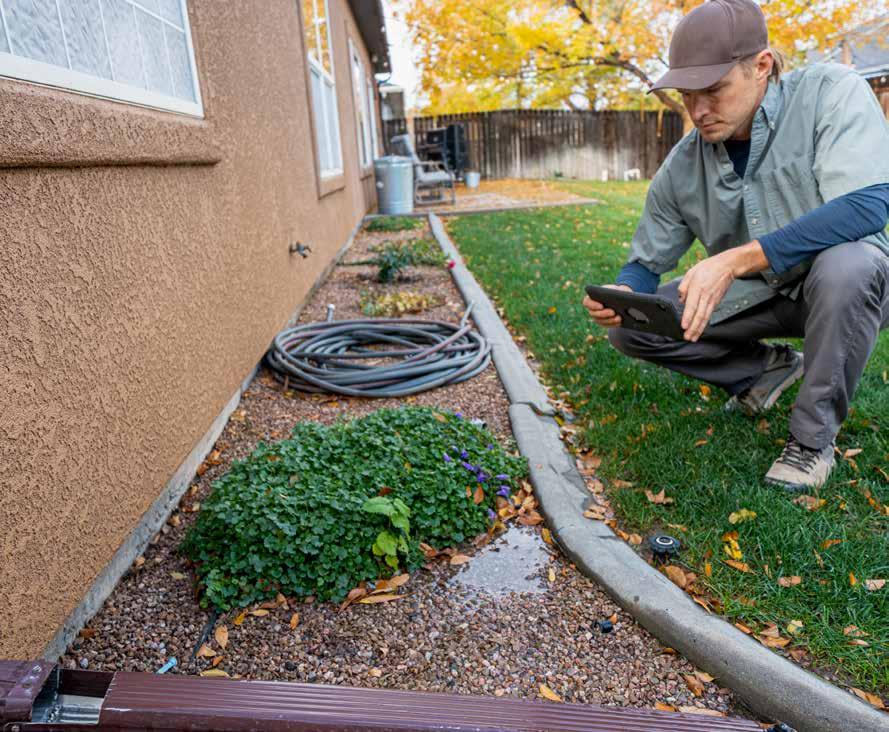
Before making any renovations or significant aesthetic changes to your home, conduct a foundation checkup to ensure that the structure is in good shape. Make it a priority to review your house periodically for signs of damage, and you’ll lay the groundwork for a stable home.
recipes by: JACK HALLOW
written by: MATTHEW BRADY
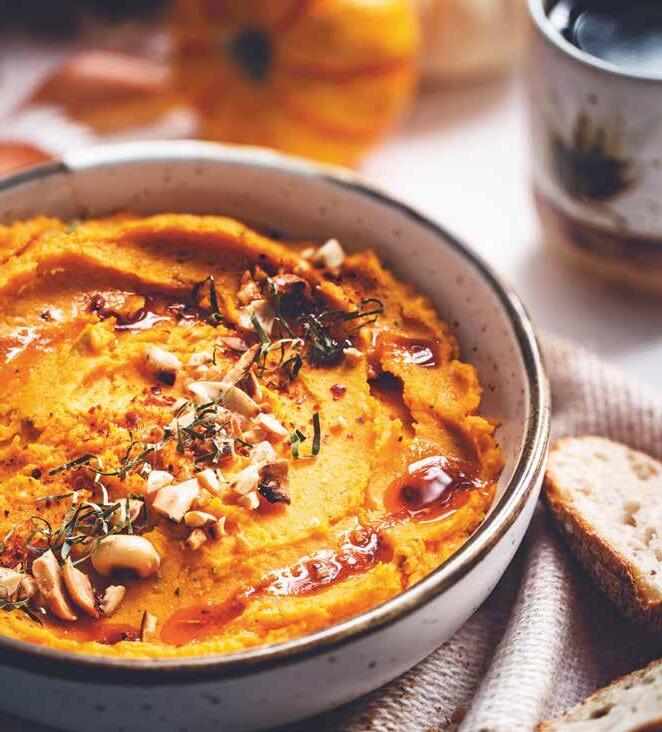

During this time of year, homes transform into cozy retreats thanks to the return of thick sweaters, plush blankets, and everyone’s favorite end-of-year fruit: pumpkin. These recipes from the book Oh My Gourd! will enhance your blissful feelings by filling your place with the tastes, aromas, and sights of the season.
Recipes from Oh My Gourd! by Jack Hallow. Smith Street Books, 2023.
Photography © Shutterstock.com.
This silky hummus is prime for the dipping. Whether your weapon of choice is pita bread, fresh falafel, any manner of veggie stick or even the humble human finger, hummus is universal.
• 14 oz. peeled and cleaned pumpkin (winter squash), cut into ¾-in. cubes
• 1 tablespoon olive oil, plus more for drizzling
• 1 head garlic
• 14 oz. tinned chickpeas, drained and rinsed
• Juice of ½ lemon
• ⅓ cup tahini
• 1 teaspoon kosher salt
• 1 teaspoon ground cumin
• ½ teaspoon chili powder (optional)
• 1 tablespoon toasted peanuts
• 2 sage leaves, thinly sliced
1. Preheat the oven to 350°F.
2. Place the pumpkin in a roasting tin and drizzle over the tablespoon of olive oil. Break up the garlic head and toss the cloves in the tin, then season everything with salt and cracked black pepper. Roast in the oven for 20–25 minutes, until the pumpkin is soft. Remove from the oven and allow to cool slightly.
3. Place the pumpkin into the bowl of a food processor. Squeeze the garlic flesh from the skins, and add to the bowl, along with the chickpeas, lemon juice, tahini, salt, cumin and chili powder, if using. Turn the processor on, then with the motor running, slowly add up to ½ cup cold water. Check the texture as you go, stopping when it reaches your desired texture.

SCAN QR CODE for the full activity and recipe book.
4. Transfer to a serving bowl and garnish with the toasted peanuts, sliced sage and a drizzle of olive oil.
Load your guests up with this carb-loaded bowl of pumpkin, rice and parmesan. A few artfully placed sprigs of rosemary on top does more than look classy, this pop of flavor really puts the OH in risotto.
• 1 lb. 5 oz. butternut or kent pumpkin (winter squash), peeled and cut into ¾-in. chunks
• 2½ tablespoons olive oil
• 5 cups vegetable or chicken stock
• 2¾ oz. butter
• 1 onion, finely chopped
• 2 large garlic cloves, finely chopped
• 1 bay leaf
• 2 thyme sprigs
• 1½ cups arborio rice
• ½ cup dry white wine
• ½ cup finely grated parmesan
• A few rosemary sprigs
1. Preheat the oven to 340°F. Line a baking tray with baking paper.
2. Put the pumpkin in a large bowl. Drizzle with 1½ tablespoons of the olive oil, sprinkle generously with sea salt flakes and freshly ground black pepper and toss to combine. Place on the lined baking tray and roast for 30 minutes, or until golden.
3. Pour the stock into a saucepan and bring just to the boil. Turn off the heat.
4. In a large shallow saucepan or deep frying pan, heat the remaining olive oil and a third of the butter. Cook the onion over low heat for 5 minutes. Add the garlic, bay leaf, thyme sprigs and rice, stirring to coat the rice in the oil.
5. Stir in the wine. Gradually add the hot stock, a ladleful at a time, stirring until the stock has been almost absorbed. Keep adding the stock gradually, cooking over low heat.
6. Stir in the pumpkin with the last addition of stock, mashing about half the pumpkin lightly with a fork as you add it. Remove the bay leaf and thyme sprigs, discarding the bay leaf, and stripping the leaves off the thyme and adding them back into the risotto. Taste the rice to ensure it is cooked then stir through the parmesan and remaining butter. Serve garnished with rosemary sprigs, if you like.


The fountain of youth and the place I most want to dip my crouton: pumpkin soup is the GOAT of the Stew Culinary Universe. When served in a hollowed-out gourd, everyone’s favorite starter takes on a whole other dimension. Come on in, the soup’s fine.
• 3 small pumpkins (winter squash), such as sugar or pie pumpkins
• 2 tablespoons olive oil, plus more for rubbing
• 1 onion, roughly chopped
• 2 garlic cloves
• 1 teaspoon ground cumin
• ½ teaspoon chili powder (optional)
• 2 lb. 3 oz. pumpkin (winter squash), peeled and cut into chunks
• 3 cups stock of your choosing
• ½ cup cream
• Pumpkin seeds, chili flakes and thyme, to garnish
1. To make a pumpkin bowl, preheat the oven to 350°F. Line a baking tray with baking paper. Slice the pumpkins in half lengthways through the stem. Use a spoon to remove the seeds. Depending on the size of the cavity, you might need to hollow out a bit of the flesh.
2. Transfer to the baking tray, cut-side up—if the pumpkins don’t sit flat on the tray, slice off a small slice to ensure they sit evenly. Rub a little olive oil inside each cavity, then transfer to the oven to cook for about 15 minutes—they should be tender but not so soft that they collapse. Set aside and keep warm.
3. Meanwhile, heat the oil in a heavy-based saucepan over a medium heat. Add the onion and cook for 5 to 6 minutes, stirring often, until translucent but not browned. Add the garlic, cumin and chili powder (if using) and cook for a further minute, then add the pumpkin and stock and bring to the boil. Boil for 15 to 20 minutes, until the pumpkin is completely tender.
4. Use a stick blender to puree the soup, then stir in the cream.
5. Transfer the pumpkin halves to plates, ladle some soup into each half, then scatter over the pumpkin seeds, chili flakes and thyme. Serve immediately.

Houston-based designer Bilal Rehman, known for his in-your-face takes on redecorating, shares his innovative tips for setting the table for the season.
Tell us about your design background:
I was raised by two immigrant parents who are both very analytical people. My mom works in banking and my dad is a businessman, and neither of them has a creative bone in their body. Our home was designed by necessity alone, and I think that that really drove me to fix spaces—when I was a kid, I would get in trouble for rearranging things I wasn’t supposed to. In high school, I started interning for a full-service design agency. I advanced all the way up to senior designer a short time after graduating then started handling my own projects. I left that company in 2022 to launch my own studio, and the rest is history.
So interior design has always been important to me. Home is where people spend the most time; it needs to be a space that sparks creativity and represents your lifestyle, interests, and story. That’s always our goal at Bilal Rehman Studio.




How do you approach holiday decorating?
I believe that great design touches every sense. When you walk into a room, it shouldn’t just look pretty—it should feel good, smell good, and be well lit. With the holidays coming up, it’s the perfect time to try out these principles. For example, my biggest rule with lighting is to avoid relying on overhead lights because they wash people out. Everybody wants to feel young and lively, and layers of light help create a beautiful glow. Try mixing floor uplights and lamps, candles, and a ceiling fixture.
Would you walk us through your concept of “nonbasic tablescapes”? To me, “basic” decor means doing what’s expected pertaining to the holiday. If it’s Thanksgiving, everybody has a turkey-shaped plate and yellow leaves or pumpkins decorating their tables. To elevate your holiday decor, find objects that work with the rest of your
interiors and act as an extension of your spaces. My home is primarily black and white, so I also have black-and-white table settings in my dining room, but I incorporate something a little fancier like crystal or acrylic glasses. Play with materials and textures in such a way as to still have a beautiful table without a fake turkey sitting on it.
When you avoid hyper-seasonal decor, you’re also more budget-friendly and eco-friendly because you’re not buying pieces that you’ll put away or throw out as soon as the holidays end. There’s a perception that high-end home design and affordability are in contrast with each other, but there are thousands of different ways to achieve a beautiful design that won’t break the bank: Go to thrift or vintage stores. Purchase $20 plates from Crate & Barrel rather than $1,000 china.
Choose pieces that you can mix into your home to keep all year round or pull out to use for multiple events or holidays. For example, a beautiful crystal serving platter would be perfect for Thanksgiving, but you can also use it for Christmas because it blends seamlessly with both holidays. If you want your tablescape to feel more like Thanksgiving, play with color by setting out fresh flowers in seasonal or less obvious but complementary hues.
How can people balance different elements when choosing holiday decor? You definitely have to find a fine balance between new and old. If you have vintage plates that are more ornate, place them next to contemporary wine glasses or clean-lined and simple silverware. That juxtaposition creates a timeless design you’ll love.
You should also balance textures when curating your decor. I would say that for every two smooth surfaces you have, you want one rough surface. For example, put a pair of simple plates next to a ribbed glass.
How do you recommend people choose centerpieces?
A lot of people tend to overstuff centerpieces, which gets really annoying because most of the time they’re way too big and block the person across the table. Instead, I would opt for about three smaller centerpieces with lower profiles or a single long one so people feel comfortable conversing around the holiday table.
What do you think is the future of holiday decorating?
I’m glad maximalism is on its way out. Too much decor doesn’t allow you to appreciate your pieces individually because you’re overstimulated and nothing seems special anymore. People are beginning to curate quality goods by going to vintage stores or flea markets and, overall, being more mindful of what they introduce into their homes.

For more info, visit bilalrehmanstudio.com
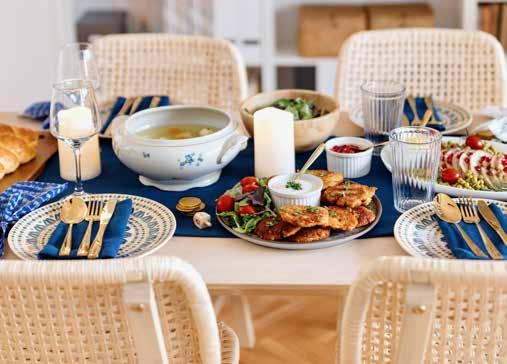


Deciding whether to sell or stay in a home can be challenging, especially when it holds the memories of cherished moments like raising a family. When you find yourself at this crossroads, it’s crucial to consider all aspects of each option. To help guide your decision, ask yourself these critical questions—your answers may better reveal the right path for you.
Have your family’s needs changed?
Whether your household is growing or shrinking, you may find that your current home no longer aligns with your needs. For instance, if you’re having a baby or older relatives are moving in with you, upgrading to a larger home might be the most viable solution. On the other hand, if you’re an empty nester whose home feels too large and lonely with the kids gone, downsizing to a smaller, cozier space may be more appealing.
Has your lifestyle changed?
Although you may have an attachment to your home, shifting priorities—such as getting a job in another state, wanting to live in a warmer climate, being closer to family, or having better access to certain activities and amenities—can prompt you to rethink your living arrangement. Whatever your motivations are, deciding to move to accommodate these changes may be the right choice.
Are you ready to simplify your life?
Over time, the constant demands of repairs, chores, and maintenance in a larger or older home can become overwhelming. Consequently, the notion of relocating to one that requires minimal upkeep may gradually become more desirable. Additionally, if


retirement is on the horizon, simplifying your living situation may allow you to allocate more time for activities you love.
Is your home worth major renovations?
If your house is older or needs substantial enhancements to its appearance, structural stability, or essential systems, you may grapple with whether to renovate or relocate. While the former option can be transformative, it can also be costly—and you may not fully recover the money you put into it, even upon selling your home down the road. Ultimately, it comes down to costs, benefits, and personal preferences, all of which should be thoroughly weighed before making a choice about your next move.
Has your neighborhood’s value changed?
Home values have skyrocketed in recent years, with some neighborhoods experiencing double-digit gains. While the pace may have slowed in certain areas, the nationwide inventory shortage persists, keeping demand high. If your neighborhood is buzzing with interest, this could be the perfect time to capitalize on the seller’s market and make a move. Conversely, you may find that nearby home values are decreasing due to factors like poorly kept properties, deteriorating infrastructure, noisy commercial development, or declining school quality.

Shifting priorities–such as getting a job in another state, wanting to live in a warmer climate, being closer to family, or having better access to certain activities and amenities— can prompt you to rethink your living arrangement.


While leaving may be difficult, selling before prices dip further could be the best way to protect your investment.
Has your home become a financial burden?
Homeownership has traditionally represented the American dream. However, you might discover that your financial circumstances have changed since acquiring your home and that you are having difficulty meeting expenses such as your mortgage, utility bills, and property taxes. In this case, selling your home could be the most prudent financial decision, particularly if it has accumulated equity.
Do you want to tap into your home’s equity?
If you’ve been in the same place for several years, you’ve likely built up a decent amount of equity. This asset offers
you the flexibility to make potentially life-changing decisions—even without selling your house. For instance, you could get a home equity loan or home equity line of credit (HELOC) to invest in real estate, fund renovations, or start a business. If you’re over sixty-two, you could also get a reverse mortgage to help provide you with financial assistance during your retirement years. Of course, selling is still a great option for capitalizing on your equity; you can use the cash left over after paying off your mortgage to upgrade to a larger home or tackle other goals.
Assessing your present and future needs is the key to deciding whether to stay put or sell your home. Should you ultimately opt to sell, consult with a real estate agent for expert guidance on navigating the process and finding your next perfect space.
interview with: NICOLAI LUND
written by: ALLISON GOMES
photography by: ECUADANE
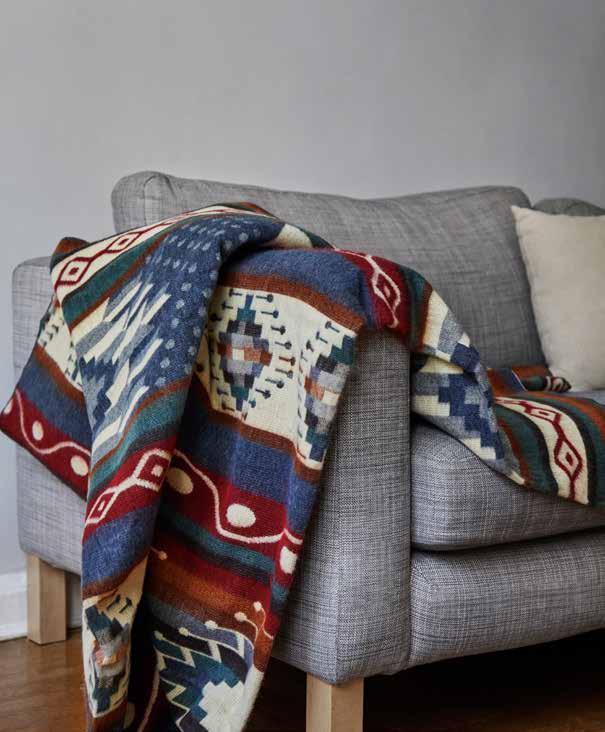
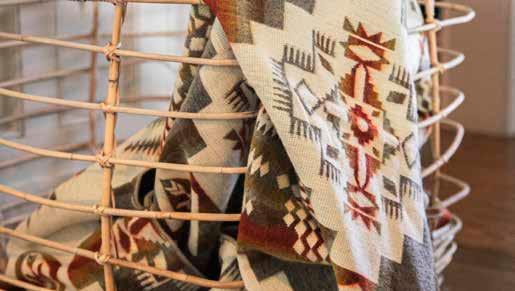
Nicolai Lund, who founded the blanket company Ecuadane alongside his wife and three daughters, discusses the magic behind their handwoven products.
Tell us about Ecuadane: I’m from Denmark and came to the United States thirty years ago. I got a job on Wall Street shortly after moving here, and I’ve been working there and in the financial industry ever since. But my family and I always wanted to have our own business. One year, we were visiting my wife’s family in Ecuador for Thanksgiving, and my mother-in-law asked me to bring a few blankets home to sell to friends at our next Christmas party. We ended up selling ten for $200 each and then sent the money to my mother-inlaw, who used it to buy around five hundred gifts for children at a local school and orphanage
After that, our friends started asking us to bring more blankets back from Ecuador, so we did for three more years. People fell in love with the blankets, and my three daughters suggested that we turn it into a family business. My wife came up with the name Ecuadane, and I think it’s pretty powerful because it brings our two countries—Ecuador and Denmark— together. Likewise, our blankets blend the Ecuadorian culture’s colors, designs, and artisans with the Danish tradition of hygge, which focuses on coziness and living in the moment.
In America, we work all the time and it can be hard to slow down and enjoy life, but that largely changed during the pandemic. People started to invest in their homes by painting them, decorating them, or adding decks, and they experienced just a taste of what it means to truly embrace life to the fullest and appreciate coziness. Now is the perfect time for Ecuadane blankets to be in American homes.
What makes your blankets unique? There’s a soul in our blankets. In fact, I call them “magic.” Our blankets are large and meant to be shared, so you can snuggle close with your partner or child. They have a great weight to them, which really makes all the difference. They let the warm air in and keep the cold out, but they’re still breathable.
Even more, people are often shocked by how soft they are. The fibers are brushed, which breaks down the material and makes it more comfortable. But like all other fibers, this means sections could end up pilling or clumping as it rubs against your body; that’s completely normal and will go away once you wash it (at least once or twice a year) and brush it with our blanket brush. If you take care of yours, it will continually look brand new and only get more comfortable the longer you use it. We offer a lifetime warranty on our blankets because we truly stand behind our products.
How careful do people need to be with Ecuadane blankets? They’re more than just a blanket that you throw on your couch as decoration. Our blankets are meant to be used and go with you wherever today or tomorrow takes you.
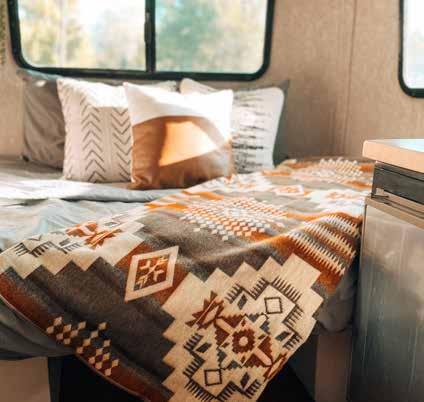
In the morning, imagine waking up to an Ecuadane blanket on top of your bed and pulling it with you as you stroll through the house to make coffee. Later in the day, you may bring it with you to your child’s soccer game out in the cold to keep you and your other parent friends warm. When you get home, if your kid knocks over a bottle of milk and the blanket is the closest thing to you, you could use it to quickly clean up the mess and then toss it in the wash. And once it’s dry, it could go back with you to bed as you start your routine all over. That’s a typical day for an Ecuadane blanket.
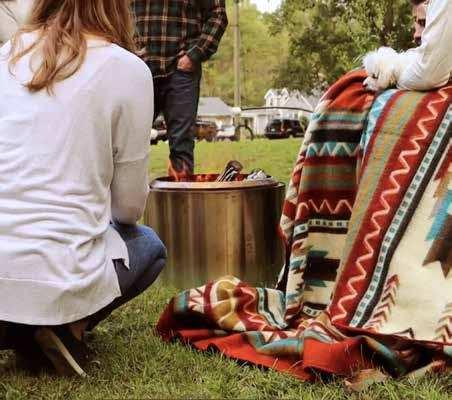
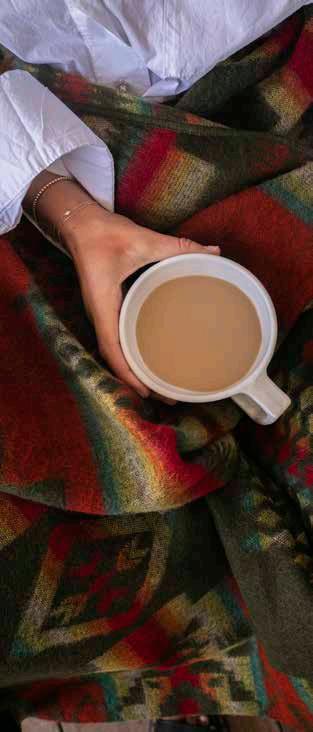

You are known for blankets but also make other luxurious products. What materials do you use?
We’re what you call affordable luxury: we don’t compromise on quality but still try to make products that everyone can experience. So we sell various home items that are made of different materials. There are more luxury products like our wool, alpaca wool, and mohair throws, but our main products, our queen-sized blankets, are made of 100 percent recycled mod-acrylic materials. This makes our larger blanket more affordable, but they are also more sustainable and completely washable.
Tell us about your designs: Every color has a specific reference, such as wealth or health. Ecuadorian blankets tend to be more colorful and vibrant, which we embrace in our current offerings. Over the years, though, we realized that they aren’t always suitable for American homes, so we started designing more neutral throws to try and appeal to a wider audience.
We have a very loyal customer base and won’t ever abandon the Ecuadorian traditions, but we also want more people to experience our products; offering more styles is the key to that.


We’re passionate about what we do and are dedicated to making the best possible products for our customers. That means we’re always searching for ways to make them even better.
Ecuadane clearly values connection with others. How else do you make people’s lives better? Partnering with Ecuadorian artisans has always been and always will be a core part of our business model. We’re a small, family-owned business that supports and brings other families together.
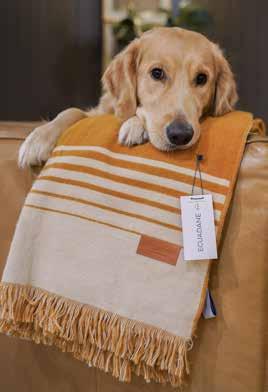
Beyond that, we partnered with the Wounded Warrior Project last year to design a blanket with their logo, which they gave to major donors and helped the organization raise even more donations. I didn’t go to war for this country and only became a citizen in 2020, but our soldiers have made a tremendous sacrifice and I want to help them in any way I can. I want to continue partnering with different organizations to support their amazing causes and bring comfort and joy to people when they need it most.
For more info, visit ecuadane.com




written by: LAUREN KIM
You may have noticed something different afoot— or more accurately, underfoot—lately as more homeowners are embracing patterned floors. If you’re looking to try something new, consider integrating any of these top options into your home’s design.
This vintage flooring can be laid out in a grid or diamond pattern. Checkerboard floors are a perennial favorite in kitchens, but they can also be a chic choice for a bathroom when created with marble tile. Other materials you could consider include ceramic, porcelain, or vinyl. Just keep in mind
the size of your room; you may need to use tinier squares in smaller spaces to create a full checkerboard pattern.
These ornate squares can add an instant “wow” factor.
Install them in an entryway to create a grand entrance, or balance them with sparkling-white quartz countertops in your kitchen or bath. Pigmented cement tiles offer a more traditional encaustic style, but ceramic or porcelain versions can provide just as great a look for less cost.
Known for its triangular pattern, herringbone flooring can be composed of wood, stone, or other materials and
can add elegance to a room. While hardwood and tile versions can be expensive because they generally require a professional to install, you can get the same look at a lower cost by using less expensive laminate or vinyl flooring. Herringbone tends to look best in larger spaces like kitchens, living rooms, and open floor plans.
For vintage appeal, tile your bathroom with beautiful arrangements of 1-to-2-inch penny-round or hexagon tiles in ceramic, porcelain, or stone. You could lay them in a retro daisy pattern, surround neutral tiles with a colorful tile border, or go more modern by using larger hexagon tiles in neutral colors, such as in muted shades of gray.
While patterned floors can elevate your home’s look, they can also clash with other design elements. Always consider how everything will work together. For instance, if you’d like a bold patterned floor, opt for neutral furniture and walls for balance. Or for a smaller room or one that lacks natural light, consider using lighter-colored flooring to create the illusion of space.
Although currently popular, patterned flooring has been around for centuries. By incorporating it into your design, you can go retro or make your home look ultra modern—it’s your choice.
written by: BONNIE JOFFE
While holiday get-togethers can bring immense joy, the anticipation can also sometimes trigger stress. However, with a simple game plan, you can stay well organized, ensuring that you can relax and enjoy time with your guests.

Be sure to do this as far in advance as possible, especially if you’re inviting out-of-towners. Whether you send online invites (which are great for a last-minute party) or printed ones, set a reasonable RSVP date that allows plenty of time for a response.
Soon after determining your invitees, make your menu choices—even if it means having to tweak a few things later. If you plan to prepare soups, stews, and desserts, most can be easily done so ahead of time and frozen until the day of.
Determine your decor
Embrace the festive spirit by including some seasonal decor in your home. From woodsy candles to vibrant poinsettias, there are numerous options you can use to craft an inviting ambience. Then put a few of these items on your checklist of things to buy.
One of the best ways to avoid unneeded stress is to address simpler tasks days or weeks ahead. These may include polishing the silver, rinsing wine and beverage glasses, and ensuring that your tablecloth and napkins are clean and pressed.
Create a 24-hour task list
There’s always a handful of duties that can’t be done until the last minute, making it easy to forget some. However, you can easily stay on top of them by putting together a checklist. A few to consider are:
• Remove previously prepared food from the freezer to defrost and reheat.
• Set the table, making sure that each setting has a chair to go with it.
• Put out serving platters and utensils, affixing a sticky note to indicate their use.
• Place drinks and trash cans in easy-to-find locations.
Implementing some thoughtful planning can lead to a celebration that runs seamlessly, transforming your party into an enjoyable experience for everyone—yourself included.


